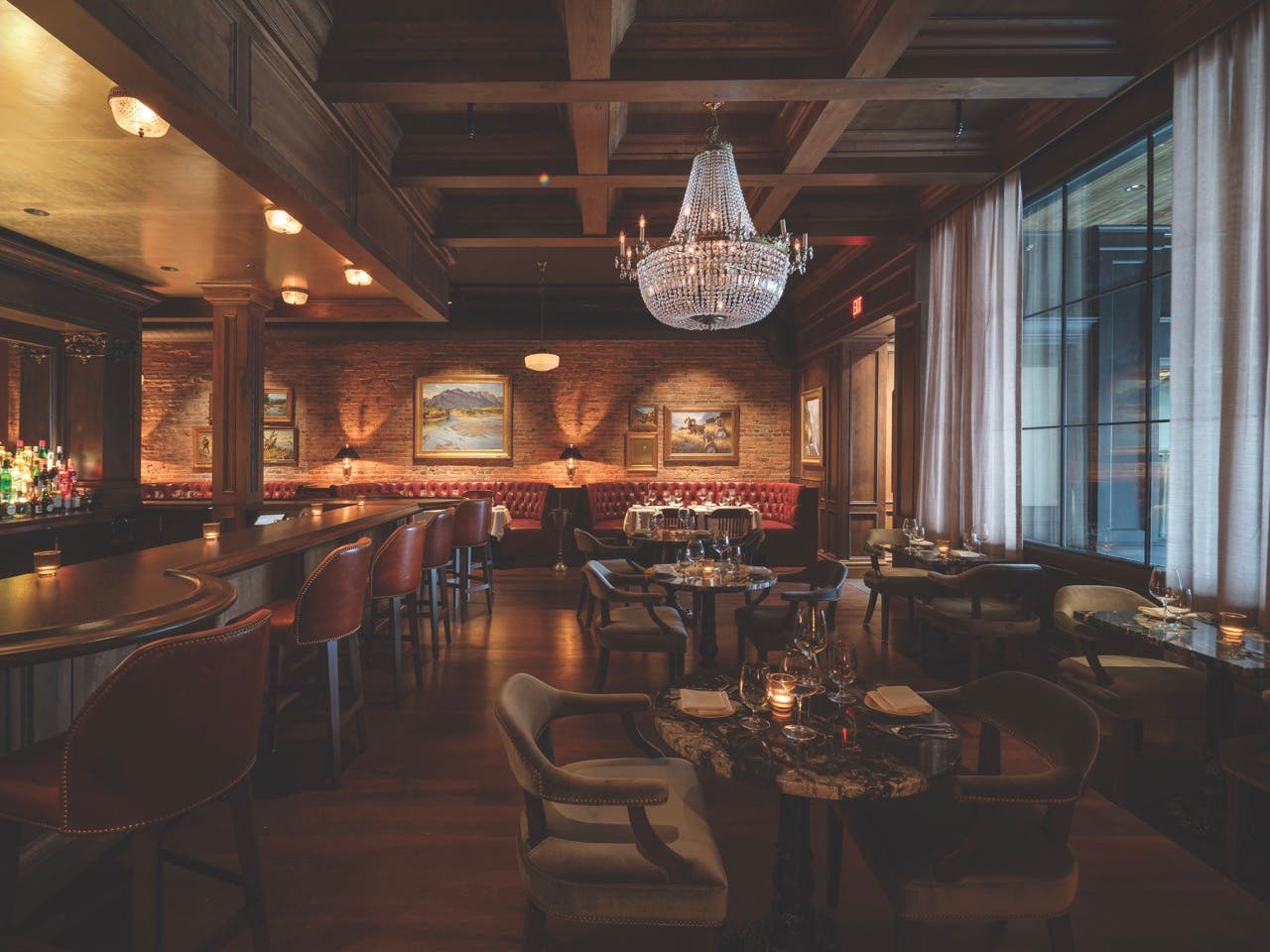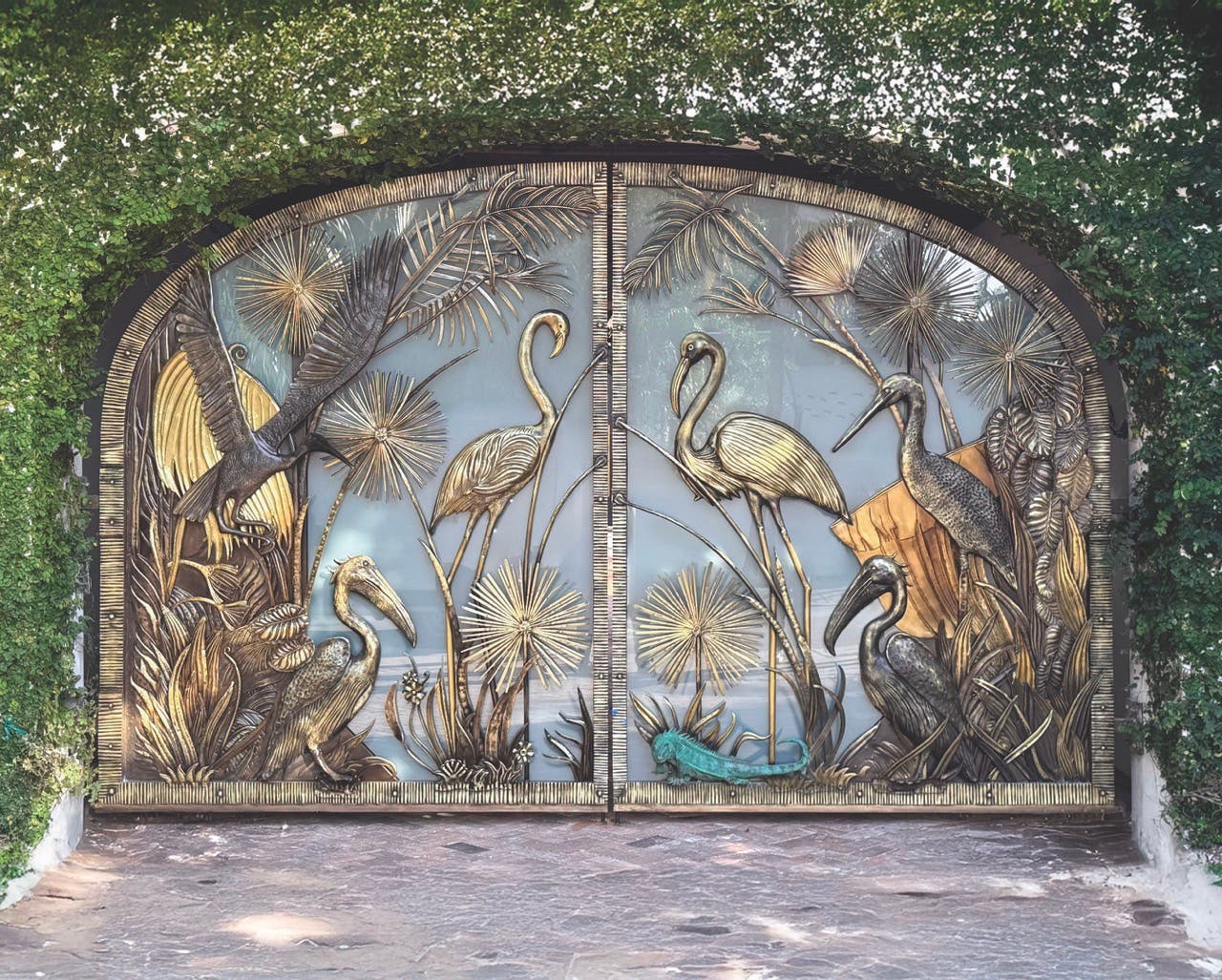
Features
Timeless Talent: Inside the Studios of Today’s Masters of Traditional Building Arts
There’s a thought that traditional building arts have dwindled to a trickle and architects and contractors can’t find highly specialized craftspeople today. Traditional Building begs to differ: Decorative painters, guilders, plaster specialists, preservation carpenters, stone carvers, ornamental metal workers, stained-glass artisans, and decorative tile setters can still be found restoring or creating new classical and period-inspired designs. In this issue we feature six artisans and their companies keeping traditional crafts alive, one design at a time.
Louis Beltran | metal worker
By Calvin Hennick
Louis Beltran sees the divine almost everywhere.
He sees it in everyday household items, like furniture, lighting fixtures, and pedestrian gates. He sees it in the bronze and iron that goes into these items, and he sees it in the work of the 180 designers, engineers, and tradespeople he employs at his 100,000-square-foot shop in Colombia.
But more than anywhere, Beltran sees the divine in the process of creation—from the initial client meetings where ideas first take shape, to the final installation of custom pieces that will last generations.
“I believe that we are all part of the same nature, and our nature is divine,” says Beltran, CEO and creative director at BELT, which has brought thousands of metal art and design projects to life in the decades since Beltran founded the company with his wife. “You can call it God, or the universe, but there is a creativity given to all of us. We all have these creative powers. It’s a question of putting our minds together.”
After graduating from architecture school in Colombia, Beltran spent five years studying his craft in Paris. He returned to his native country in his late 20s, but he has spent his life traveling the globe, completing projects in the U.S., Europe, Australia, and New Zealand. At one point, he spent up to 80 percent of his time abroad, but that has flipped over the past several years, and he now spends the bulk of his time in Colombia, creating more projects for clients in Central and South America.
Roughly half of BELT’s work is for private residences, with the rest split between institutional clients like temples and commercial projects like boutique hotels. For Beltran, the joy of creation comes in finding his own unique way to express his clients’ ideas.

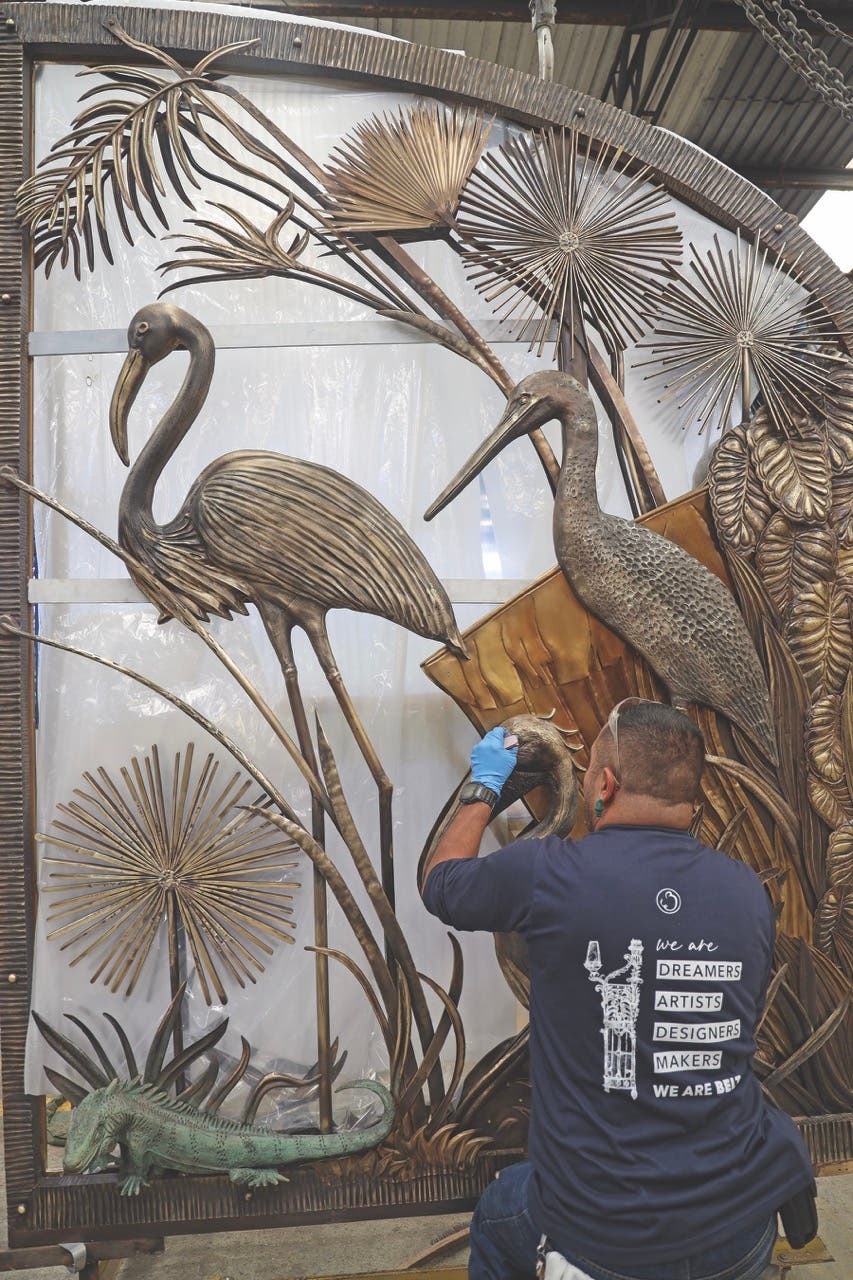
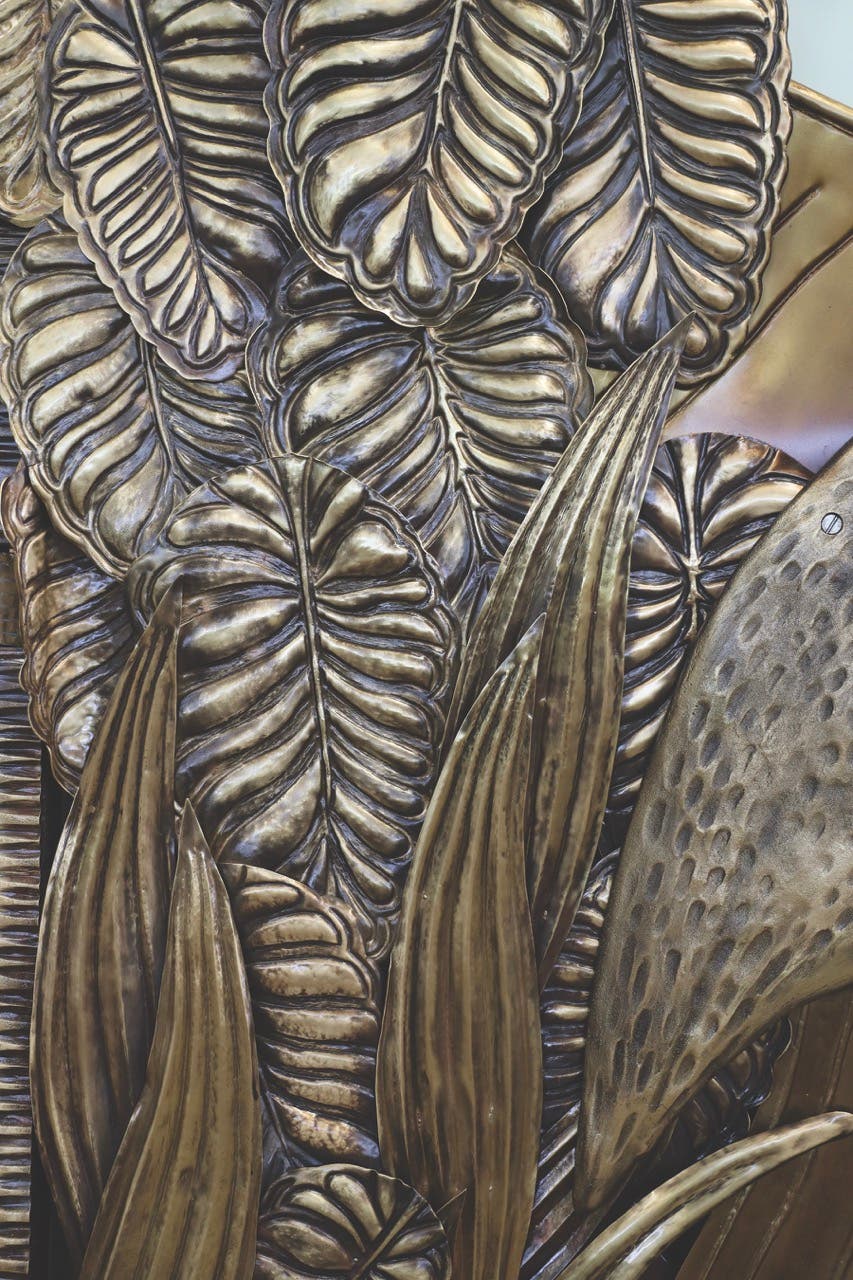
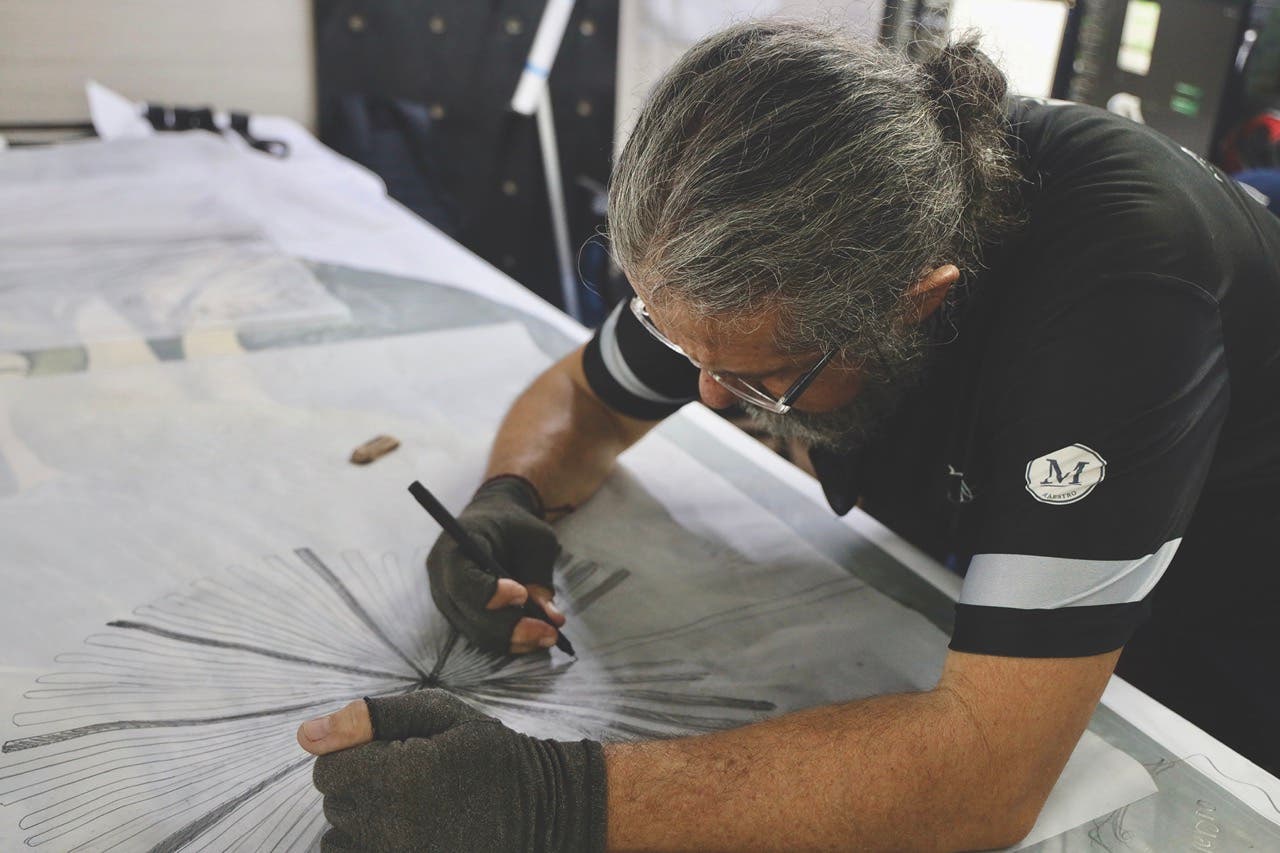
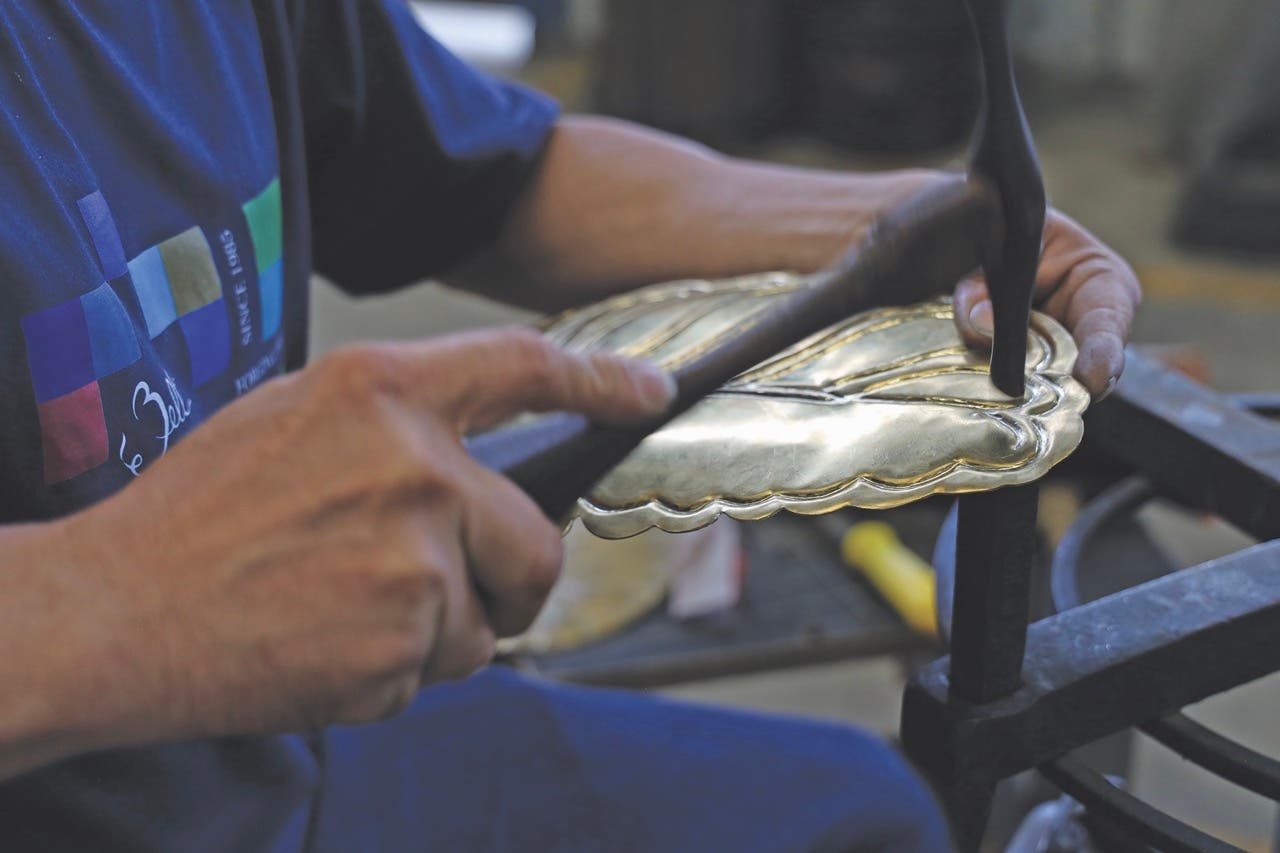
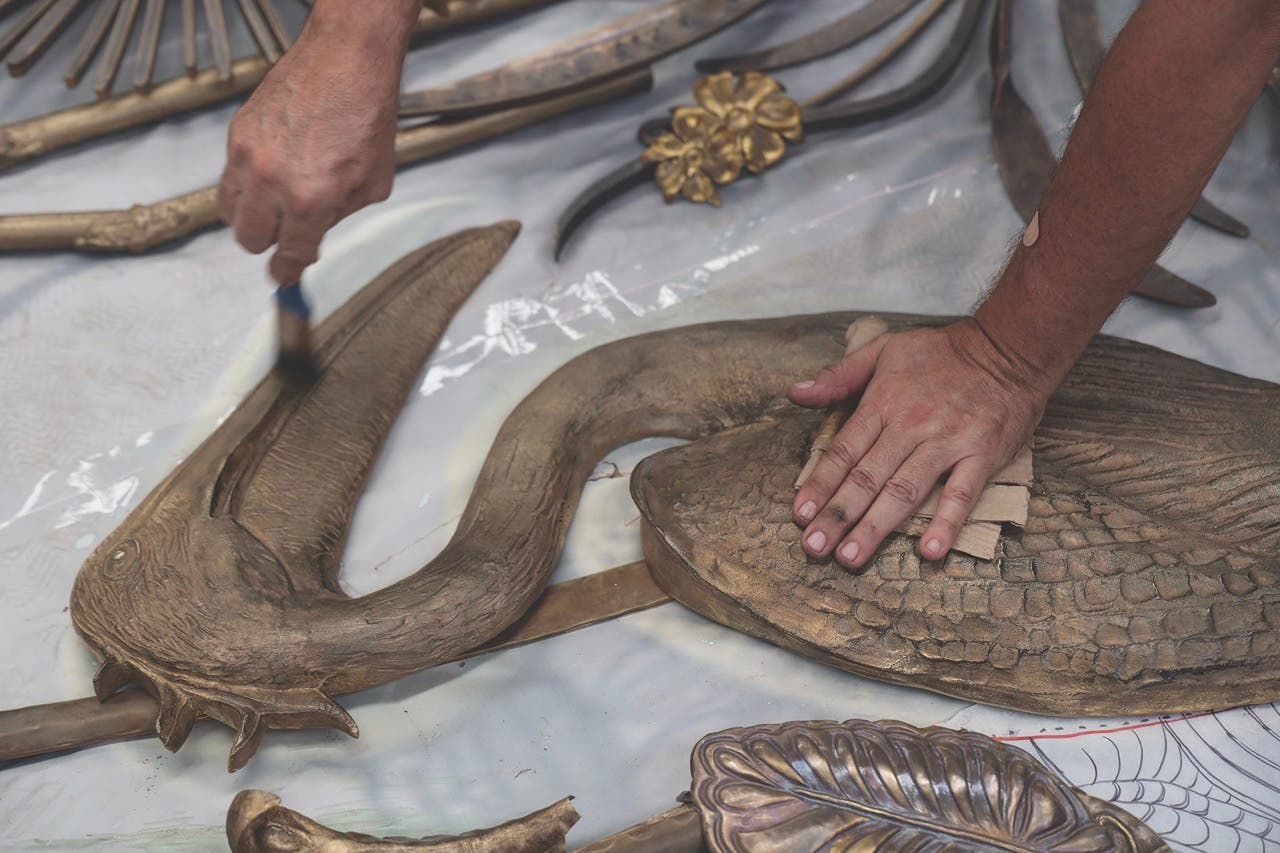

Recently, the owner of a large estate in Naples, Florida, requested a driveway gate featuring peacocks. Beltran’s challenge: crafting a functional piece that fit the landscape and the property, while both delighting the homeowner and bringing his own artistic vision to life.
“We came up with a design where one was looking in, and the other was looking out,” Beltran says. “The gate welcomes you when you open it, and it says goodbye when you close it again. Every single piece was designed to mimic the feather of the animal.”
For another project, BELT created 80 bronze items ranging from faucets to light fixtures to curtain rods. To kick off the work, Beltran visited the owner of the estate, armed with clay models and initial sketches. The project took three years in total.
Like the items he creates, Beltran’s own career is the result of happenstance and serendipity. When he returned to Colombia at 29, he was an architect with no buildings to his name. But fate intervened when a friend needed metalwork for a 13-story residential project—a job that no other artisan in Colombia could handle.
Beltran took the job, but he found that he didn’t even know how to ignite a forge. It took him 20 days, and he had to hire a local horseshoe maker to get the fire going.
In a way, that fire has never gone out.
“Forging has always been seen as magical,” Beltran says. “For me, that forge was like a hearth—heating my home and sparking new ideas.”
Drew Bevolo | Lighting
By Calvin Hennick
Stroll through the French Quarter at night, and one shape will burn itself into your brain: that of the neighborhood’s iconic Vieux Carré style gas lanterns. The shape, now synonymous with the Big Easy, has made its way onto tee shirts and keychains, but these lamps mostly started out as flat sheets of copper at Bevolo Gas & Electric Lights.
“It’s an integral part of the landscape of New Orleans,” says Drew Bevolo, of the lights first made by his grandfather, Andrew Bevolo, Sr. “People have used it in New Orleans advertising. You see that streetlight, you see Mardi Gras beads on it, you see the drunk guy leaning against the pole.”
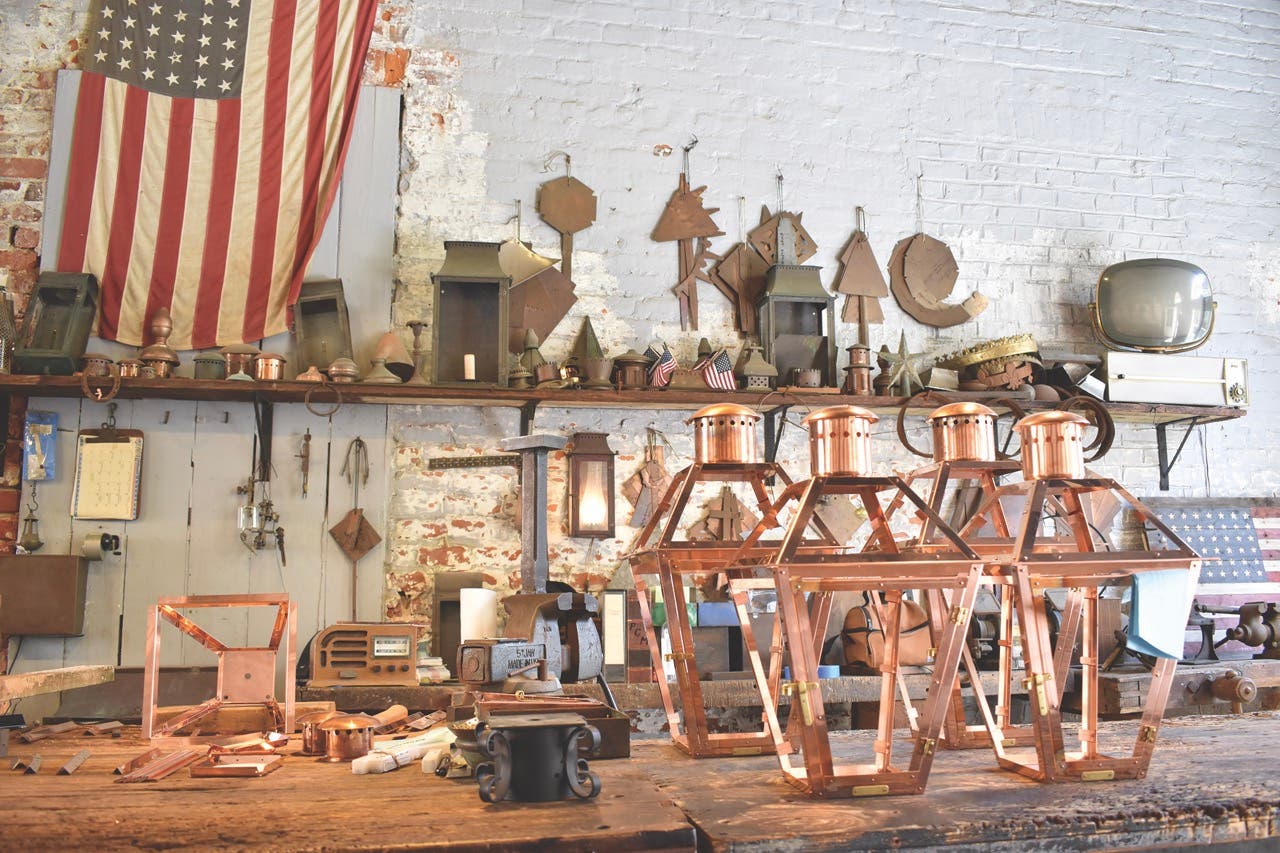
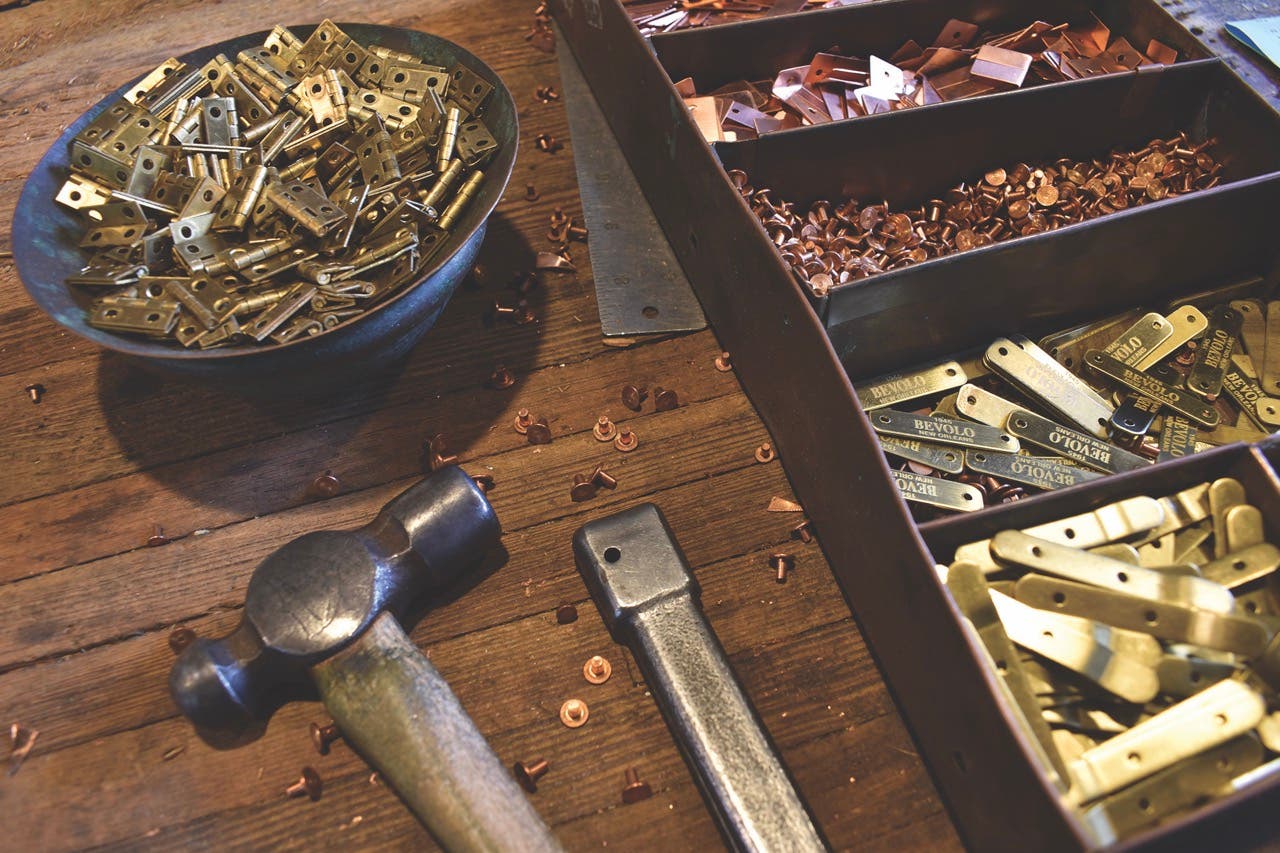
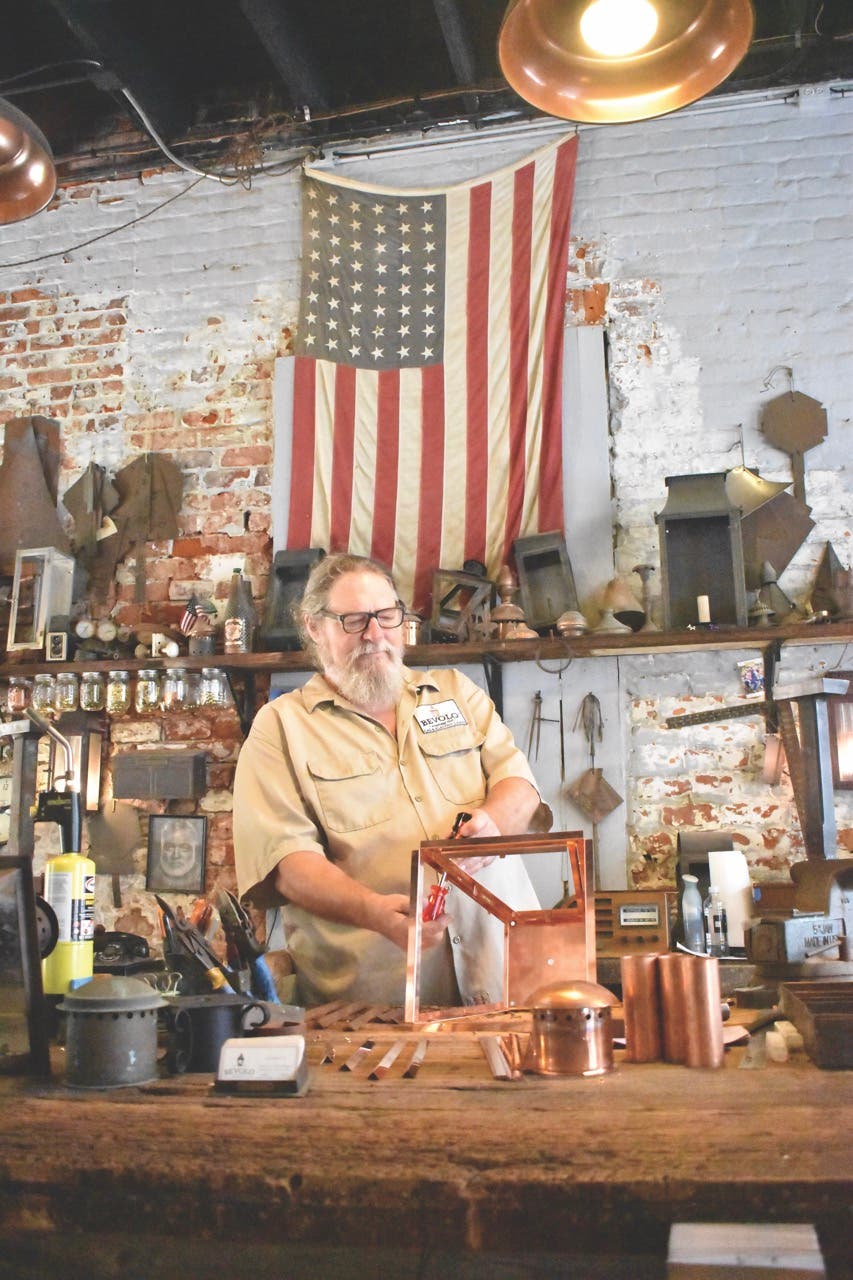
Drew Bevolo is now the third-generation owner of the lighting company, which continues to make the lamps that adorn French Quarter homes and restaurants. Each light takes around two full days to make (although Bevolo notes that it takes up to two years to learn to make one). “We have nothing on computers,” Bevolo says. “We have a couple of templates. It’s all in people’s brains. It’s like the Coke formula.”
Andrew Bevolo, Sr. started the company in 1945, mostly working on chandeliers at first. Then, as damaged streetlights began to make their way into the shop, he replaced the soldering on the fixtures with rivets, leaning on his experience in the aviation industry.
“That was his historic contribution to lighting,” Drew Bevolo says. “It was a historic problem with gas lights, that you couldn’t turn the flame up, because it would melt the solder joints.”
One night, when Andrew Bevolo, Sr. was tapping away in his shop, Baton Rouge architect A. Hays Town wandered in with sketches he’d been drawing in the French Quarter. Town asked Bevolo whether he could bring one of his lighting designs to life. Bevolo responded: “If you can draw it, I can make it.” That first lamp was an architecturally neutral design, what Bevolo now calls its original French Quarter line of light fixtures. Over time, the company created the more stylized Vieux Carré lantern design, with a number of iterations of the lamp named for the businesses that first commissioned them. Although Bevolo’s lights have become a New Orleans signature, the company also has ample business around the world, selling to buyers in all 50 states and more than two dozen foreign countries.
Bevolo’s process today still involves cutting, scribing, breaking, bending, rolling, drilling, and riveting copper. The shop’s artisans use hand and foot shears, as well as ball-peen hammers in their production, working with corrosive-resistant, American-mined copper until they have transformed the metal into timeless, durable works of art. Many of the shop’s original artisans retired in the late 1990s, and the company has since worked to train a new generation of craftspeople.
“What we do is very special,” Drew Bevolo says. “We’re very protective of it. We only train good people, and we want to keep our employees forever, if we can.”
“Nothing is really automated here,” he adds. “Everything is done the same way we’ve always done it—by hand, from scratch, the long way, the old way. We’re trying to keep the tradition of how we make our lights intact.”
David Riccio | decorative painter
By Nancy A. Ruhling
Photos by John Canning & Co.
Several years ago, John Canning & Co.’s David Riccio secured a commission to do restoration work on a prominent Catholic church in Connecticut. The project was going smoothly, and Riccio was delighted to work with the priest, a perfectionist who wanted to bring the church back to its original glory.
“He lamented the fact that the original high altar—a 30-foot-high Gothic Revival piece that had finials and elaborate ornamentation—had been torn down,” Riccio says. “I told him we should build a replica, and he got a really puzzled look and said, ‘Do people still do that? I didn’t think something that beautiful could be built today.’”
Riccio, understandably, was shocked because John Canning & Co.’s 60-person team of decorative plasterers, ornamental plasterers, masons, carpenters, fine-art conservators, and architectural material conservators have been specializing in such projects for more than four decades.
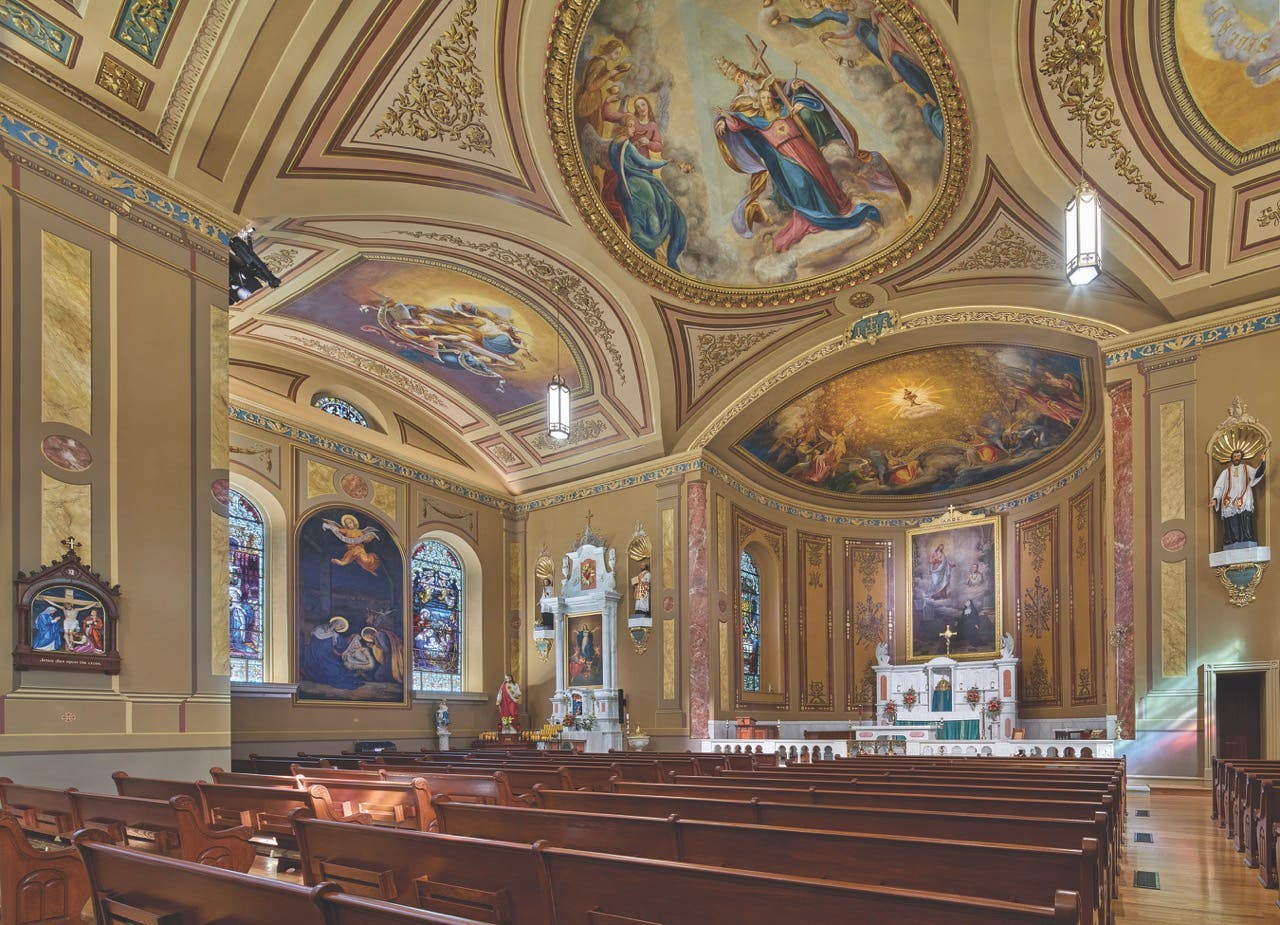

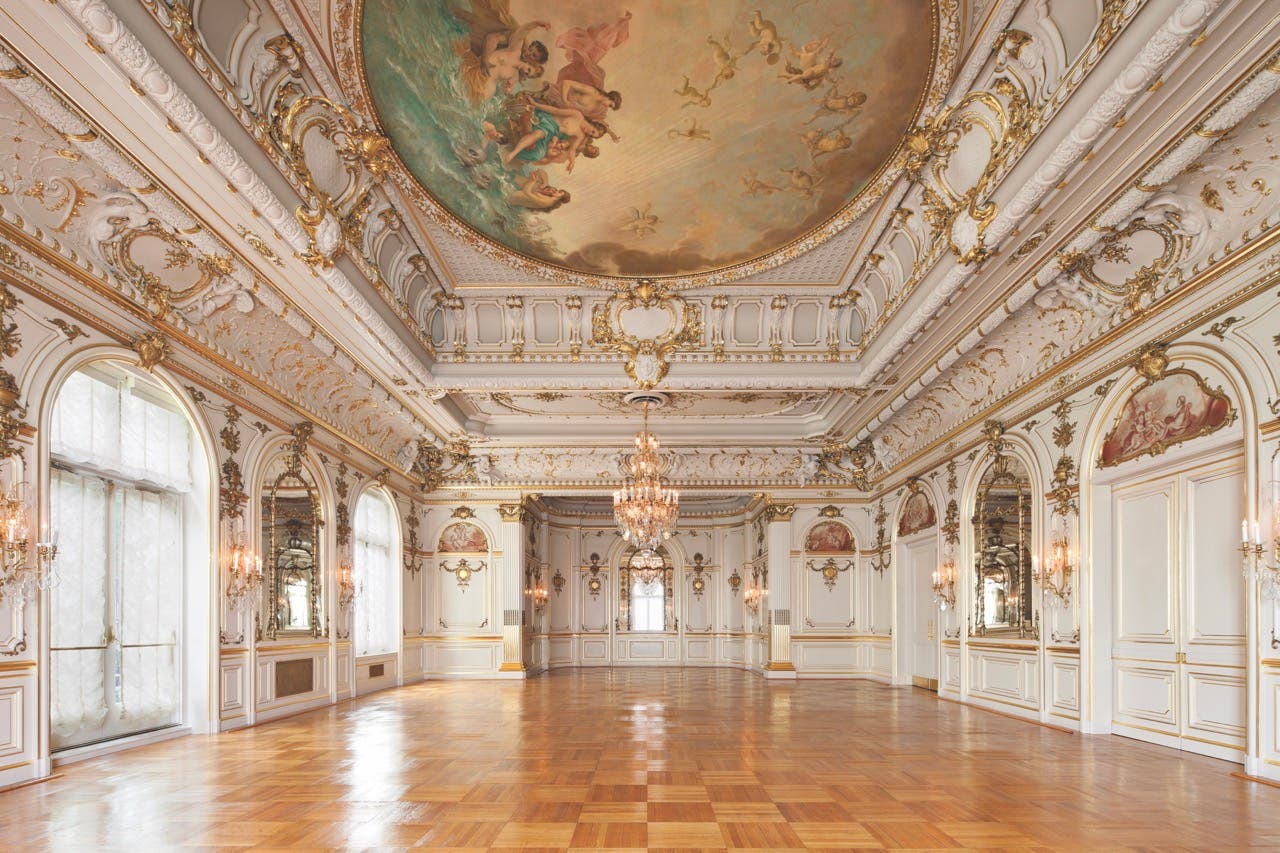
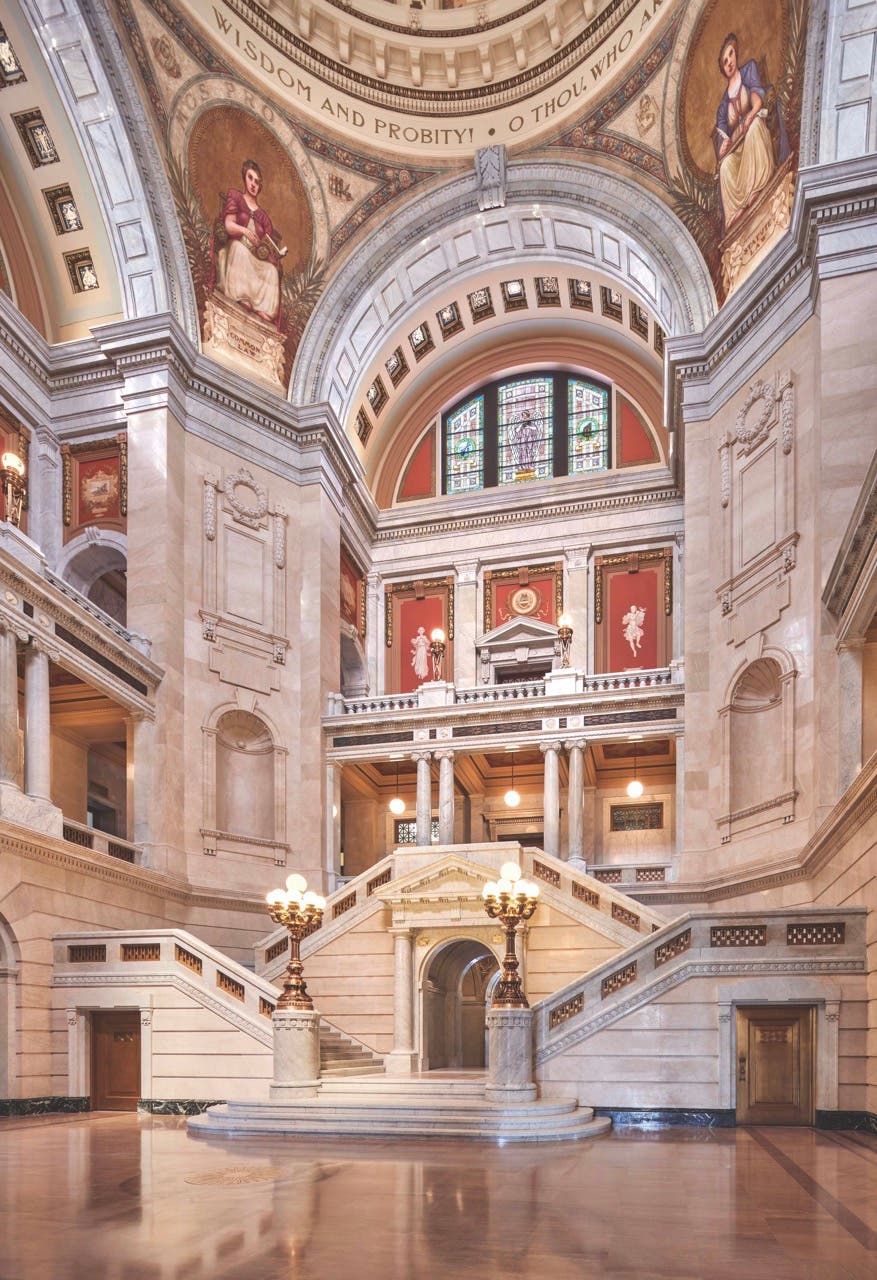
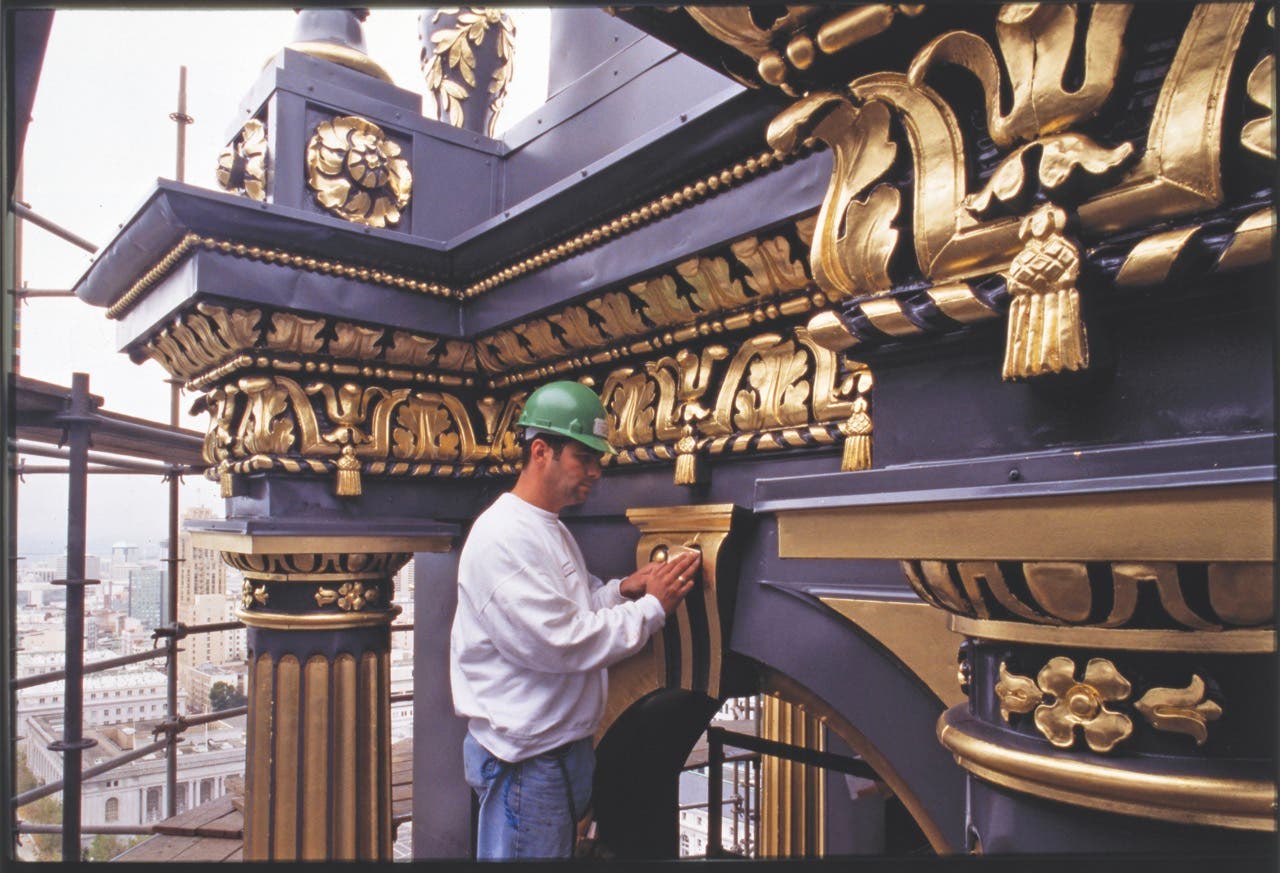
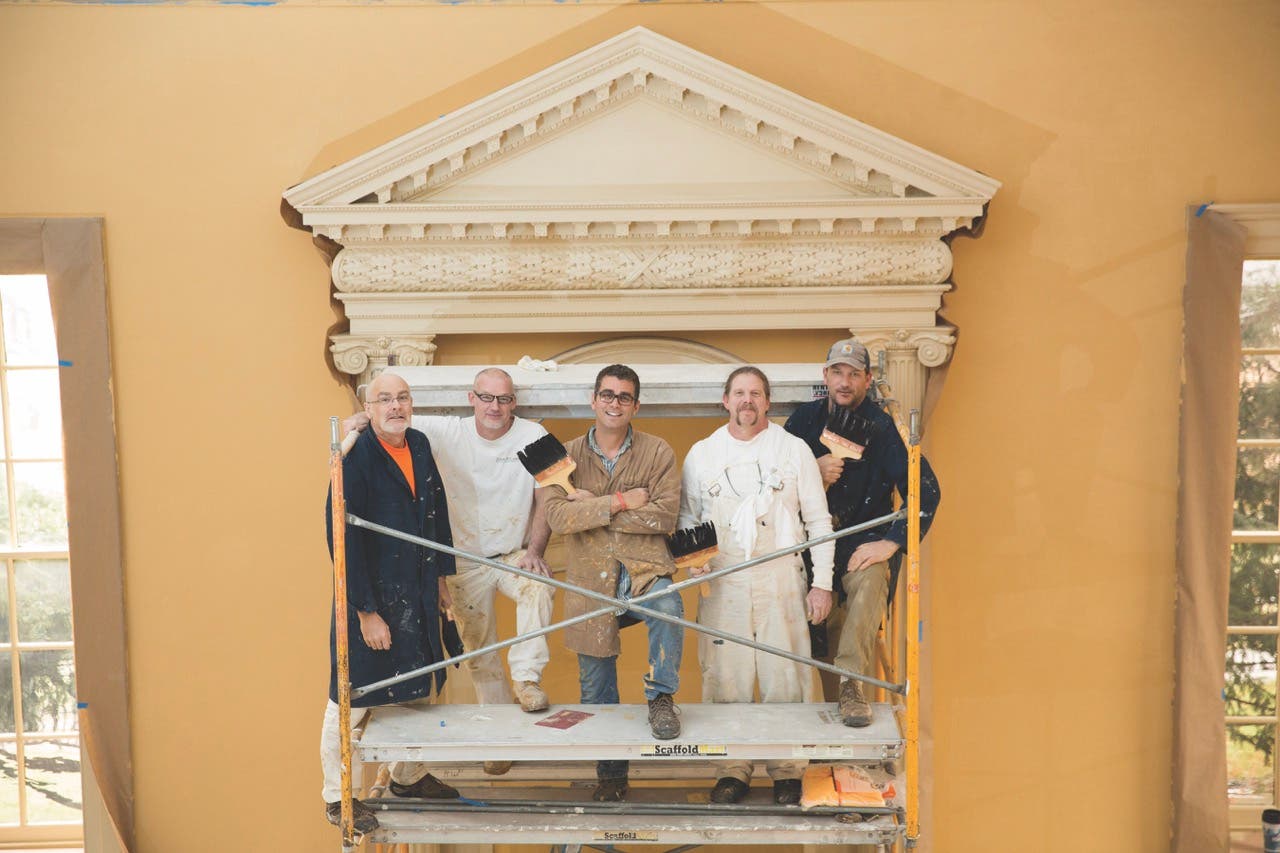
“At that moment, I realized that I have an obligation to educate people that these crucial trades are available and viable to them,” says Riccio, an industry-recognized expert on historic flat and ornamental plaster as well as decorative painting techniques, gilding, and glazing.
Long before Riccio entered the trade, he loved the idea of building things that last. He comes from a long line of carpenters: His grandfather and great-grandfather were furniture makers in Italy, and his grandfather, along with his brothers, opened a furniture, upholstery, and cabinetmaking shop in New Haven.
When Riccio’s family restored their 1900 house, he got a taste of all the trades. “I had a knack for making things out of wood,” he says. “And I wanted to go to a technical school and become a carpenter.” His parents, however, had other ideas, and he earned a degree in business management and marketing instead.
It was while he was working in that field that he met John Canning, who, for the last 45 years, has been considered the pre-eminent decorative painter in America, and John’s youngest daughter, Jackie, who, at the time, was a journeyman decorative painter.
Ricco started dating Jackie (they are married and have four children) and helping John promote business events. When Canning asked him to join the company as a project manager, Riccio readily agreed but asked to be trained in the craft. Like Jackie, he enrolled in Canning’s state-accredited 6,000-hour decorative painting apprenticeship program, which is modeled on that of The City and Guilds of London Institute that Canning graduated from.
“It’s pretty intense,” Riccio says. “I was working full time so it took me five years to complete.”
Over the last 25 years, Riccio, a Professional Associate of the American Institute for Conservation of Historic and Artistic Works and an Association for Preservation Technology Recognized Professional, has taken the lead on Canning projects at the Virginia State Capitol, the Pennsylvania State Capitol, Radio City Music Hall, and the War Memorial Opera in San Francisco.
Riccio works a lot of hours—he’s never bothered to tally a weekly total—because “I don’t consider it work.”
Jackie, the studio’s production manager, and their two oldest children also work at John Canning & Co., and Canning’s oldest daughter, Dorothy, is Riccio’s business partner. (John, who technically is retired, still offers advice and support on projects.)
Sometimes in his free time to clear his mind, Riccio takes on additional projects. A case in point is the chapel on the campus of St. Joseph’s Church in Norwalk.
On nights and weekends, he’s made the hour-long commute to work on the restoration, getting his children and others to pitch in to join him in the volunteer project.
“It became a refuge for me during Covid,” he says of the project that won a McKim, Mead & White Award from the ICAA. “And it has been a wonderful teaching experience. My son has become very interested in stenciling and decorative painting.”
Riccio remains committed to the business and the industry. “I want the trades we’re involved with to continue and get better,” he says. “As I discovered while working with that priest at the Catholic church, people are disconnected from the arts, crafts, and architecture.”
Mary May | wood carver
By Jeff Harder
Long before becoming a master wood carver, Mary May always had a distinctive way of perceiving what was in front of her. I’ve always thought in three dimensions,” she says, whether it was while scribing faces into overgrown zucchini from the family garden or picking up the basics of carpentry from her hobbyist father. In college, May explored ceramics and spent time studying abroad in London, where, during visits to centuries-old castles, cathedrals, and manor homes, she was captivated by the fine hand-carved wood detailing. If only people still did this by hand, she thought.
Back home in Wisconsin, May wandered into a wood-carving shop helmed by Greek master Konstantinos Papadakis. “Within about 30 seconds of walking in, I knew: if I could quit my job and do this forever, I would,” she says. That’s precisely what she did, spending three years studying with Papadakis and learning traditional, old-world techniques. (“It’s hard to find that kind of teaching anymore, from someone who went through a traditional apprenticeship and journeyman training and then came to America,” she says.) Suffused with sincerity and single-mindedness, she continued her training at a Greek wood-carving shop populated by Papadakis’s mentors, working daily from morning ‘til evening on decorations for Greek Orthodox churches, then, later, among the carving masters at City and Guild’s College in London.
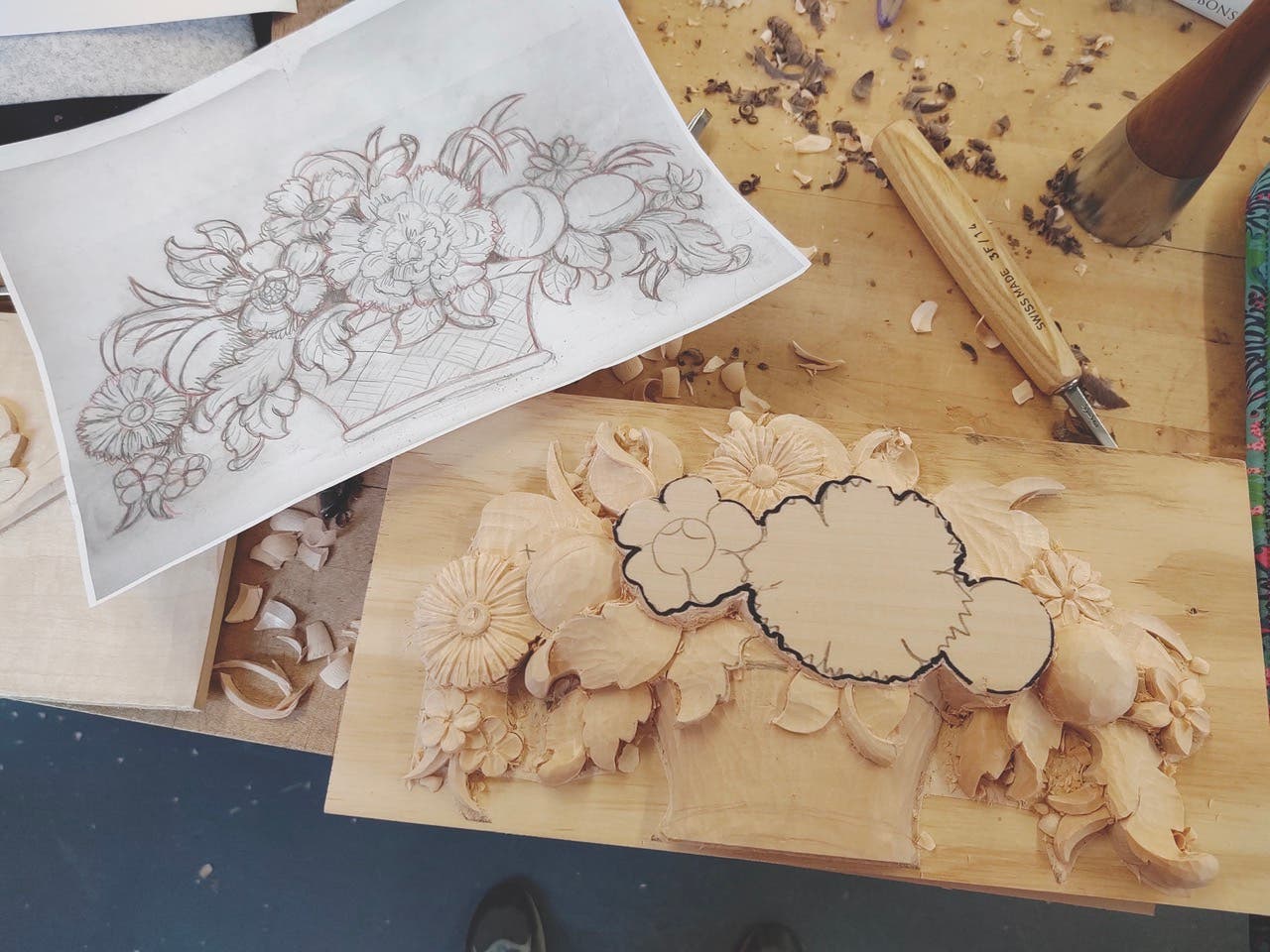
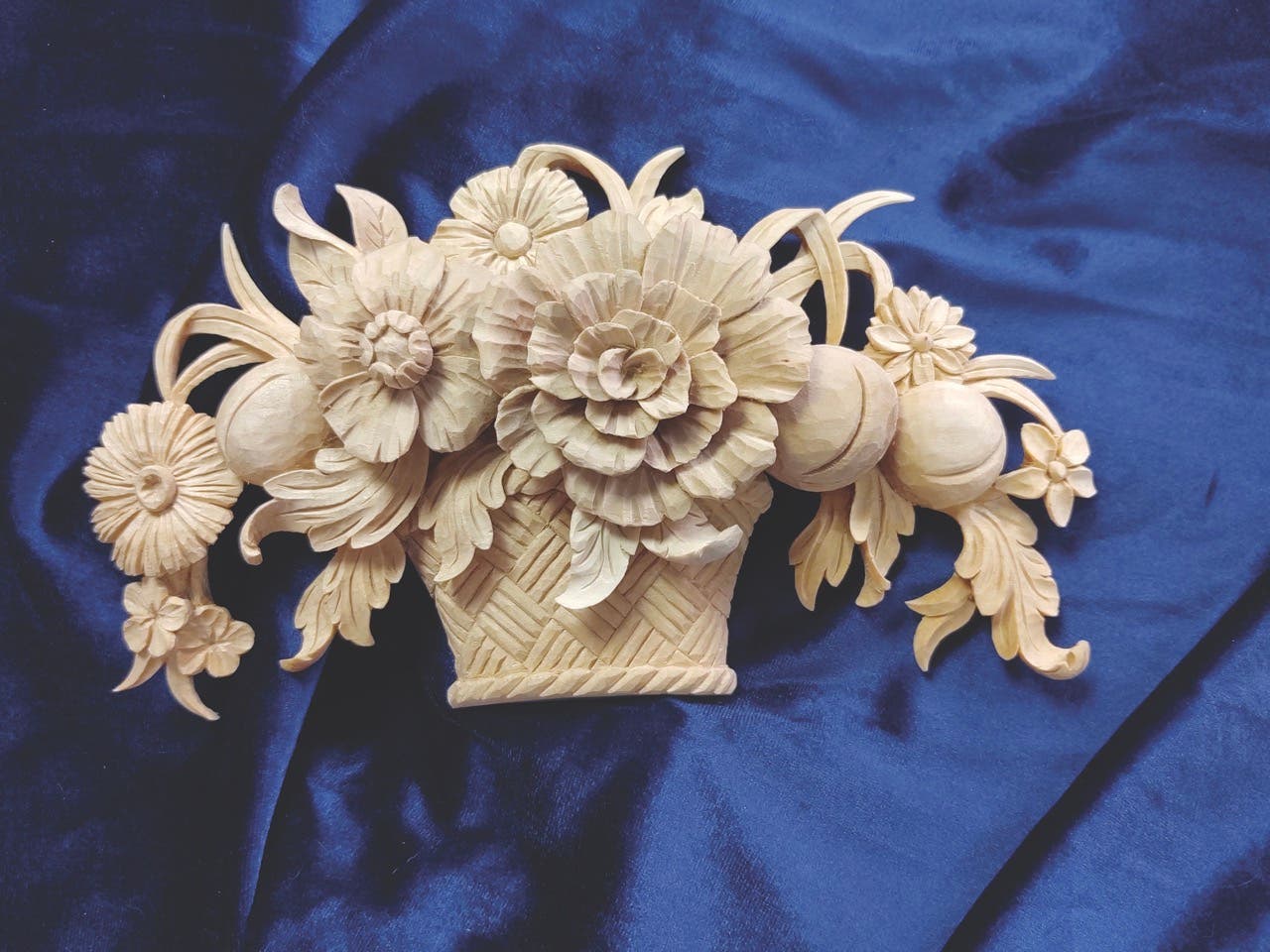
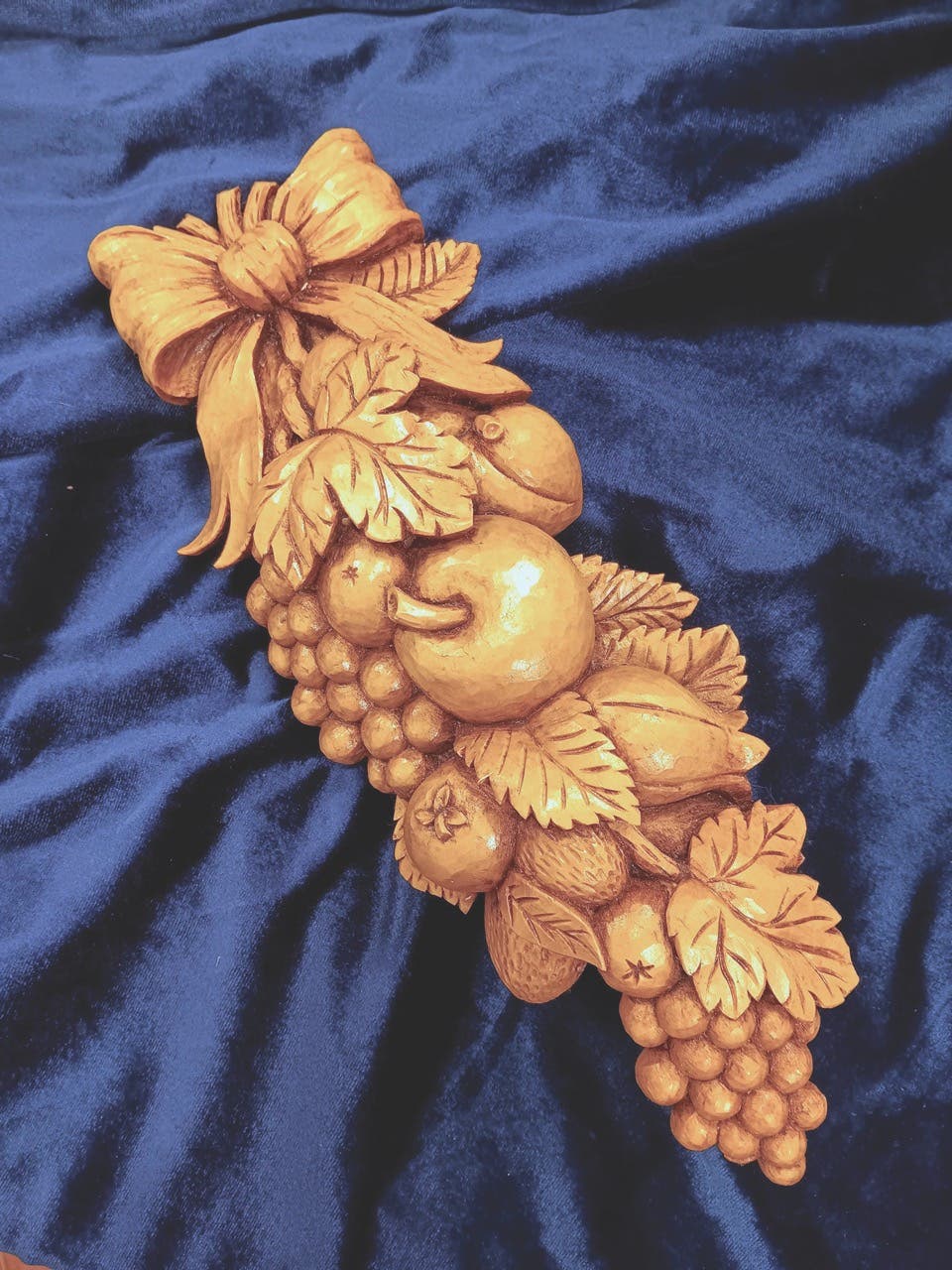

“I’ve always been interested in the traditional, whether it’s traditional architecture, design, or furniture,” she says. “That beauty and balance in the details is something you really don’t see now.” She took every commission that came her way—fireplace mantels, sculptures, repairs—and eventually set up shop in Charleston, South Carolina, 25 years ago. Along the way, she developed a special fluency in carving acanthus leaves (she authored a 2017 book on the motif) and an abiding adoration for working with black walnut. “Just from working with the tools, black walnut has a lovely sheen and polished look,” she says. “I don’t like to sand my carvings, and I joke with students: don’t use the 50-grit gouge.”
Along with being a seasoned stone carver, May is a proficient instructor, offering weeklong intensives and other in-person courses around the country to students of all ages and walks of life. (A surprising number of them are retired engineers, she says. “They just love the precision.”) Wielding long-handled gouges and working with basswood, students learn the fundamentals through a thoughtfully structured curriculum; a typical progression for students might begin with crafting a donut—essentially, two circles with rounded edges—before progressing to a shallow-relief flower with overlapping petals. Lately, May has devoted great effort to building up Mary May’s School of Traditional Woodcarving, a subscription-based online platform with more than 300 asynchronous video lessons. “Hopefully, that makes carving more available to younger people and people who need the flexibility,” she says.
These days, May splits her time between Charleston and Missouri, where she tends a few cottages and labors in her lakefront workshop. She’s mulling a permanent move to run an academy on the premises—she has nascent plans of offering three-month courses designed as a quasi-apprenticeship—and take advantage of the environment’s serenity. And as she begins a commission for an impossibly detailed fireplace mantel in the style of 17th-century carver Grinling Gibbons, May grows audibly excited at the prospect this new challenge might bring. “I’m pushing my knowledge and abilities to a bit of an uncomfortable point,” she says, “which is what I love.”
Michael Merritt | building arts
By Calvin Hennick
At Merritt, robots aid in sanding and designers use 3D building information modeling (BIM) tools to accelerate work and minimize errors. What hasn’t changed in nearly six decades, though, is a commitment to craftsmanship and quality.
“We leverage automation where we can,” says Michael Merritt, chairman and visionary of the company. “Clients want things faster, the expectations of quality level keeps rising, and there’s a large volume of work that needs to be done. If we could bring in 100 new cabinet makers and finishers tomorrow, we would do it. But those additional employees don’t exist. So, we have to find a blend of technology and craft to execute what our clients want us to bring to the table.” Merritt also has built a training center to help keep the craft alive. This gives their employees an opportunity to further their careers and allows them to provide apprenticeships for those who have an interest in learning the trade and joining the Merritt team.
“The architects and designers that we work with are designing art,” says Keith Merritt, vice chairman and master craftsman. “So, you must have that craftsmanship and artisan skill, to bring their designs to life and make them functional. We do a great job of that, and we’ve been doing it for years—everything we deliver is custom and unique to the homeowners’ visions.”
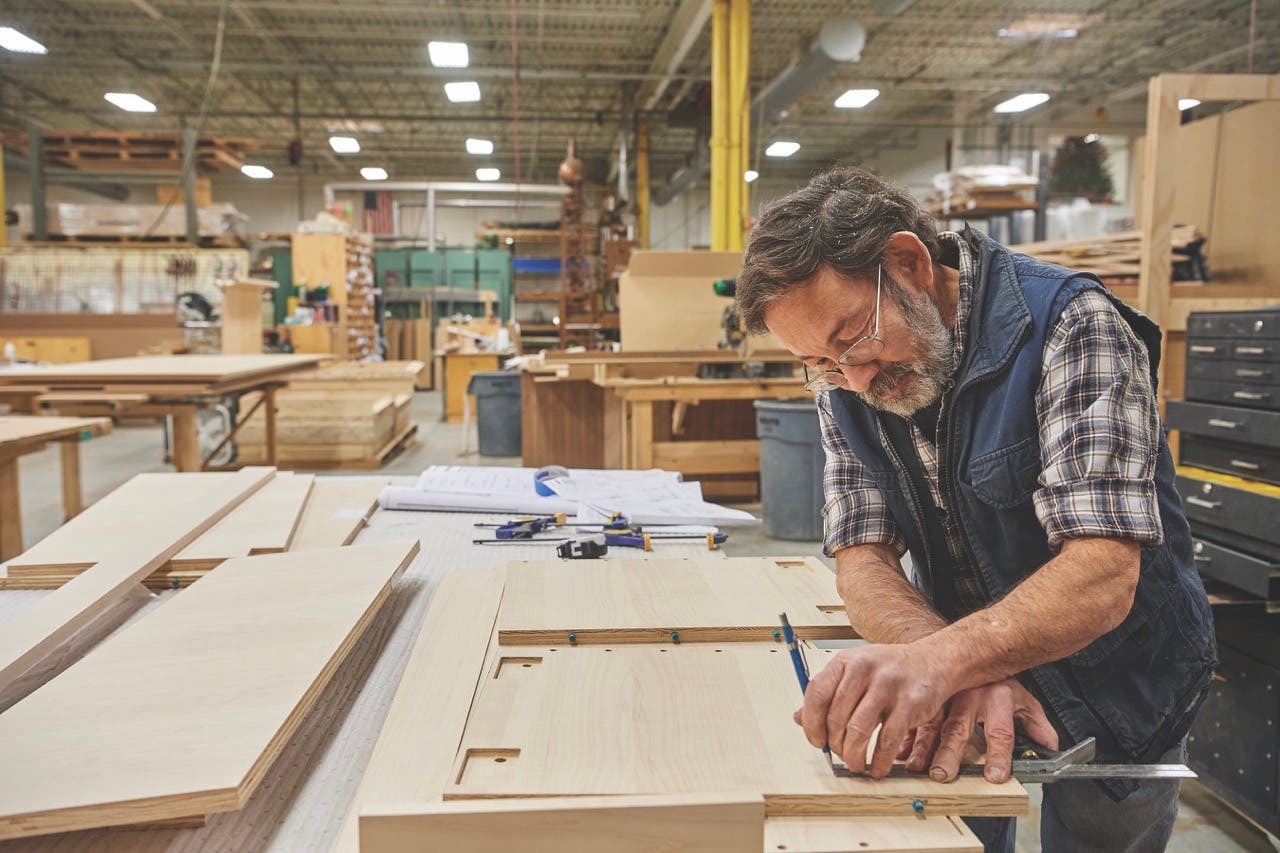
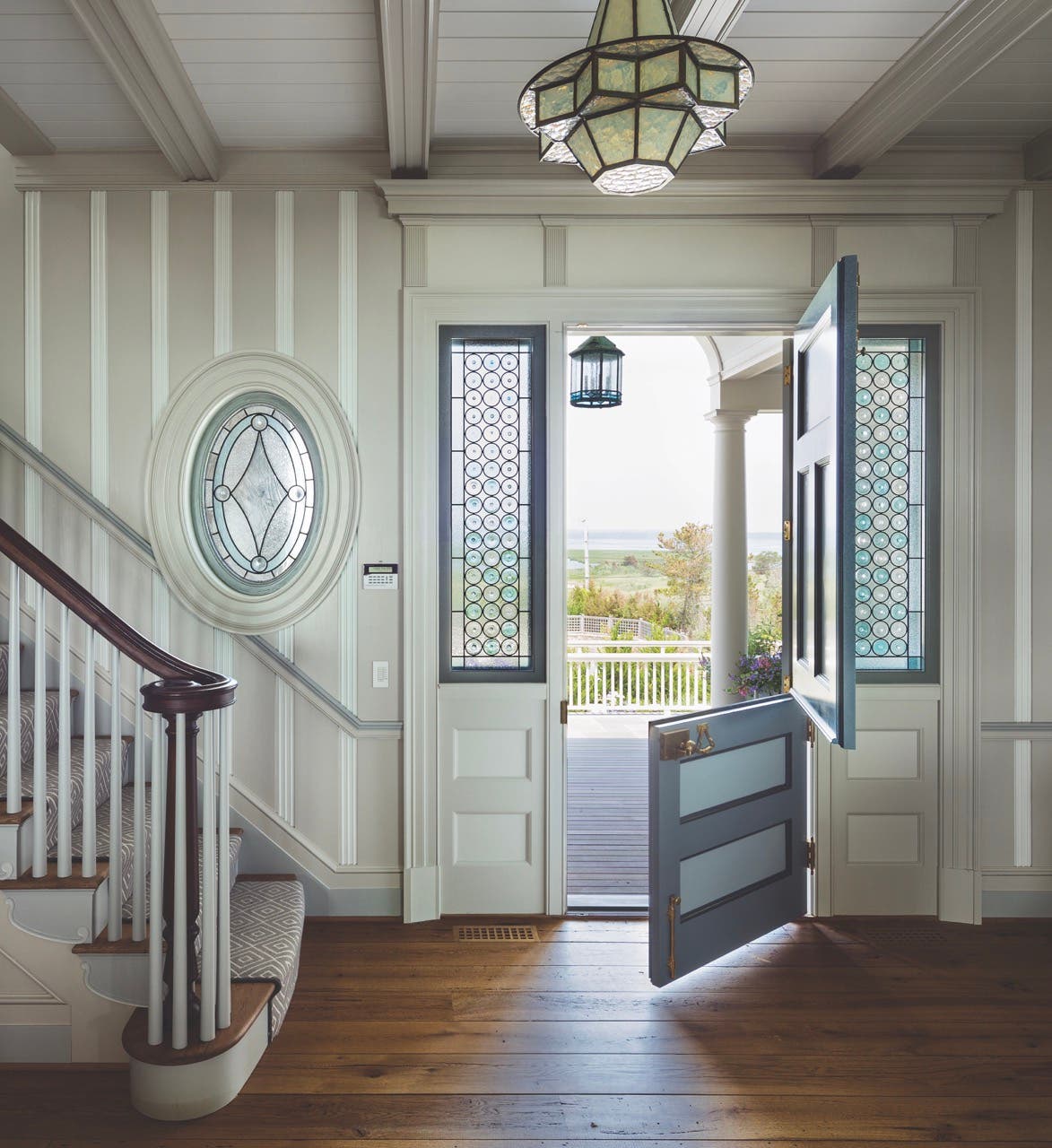

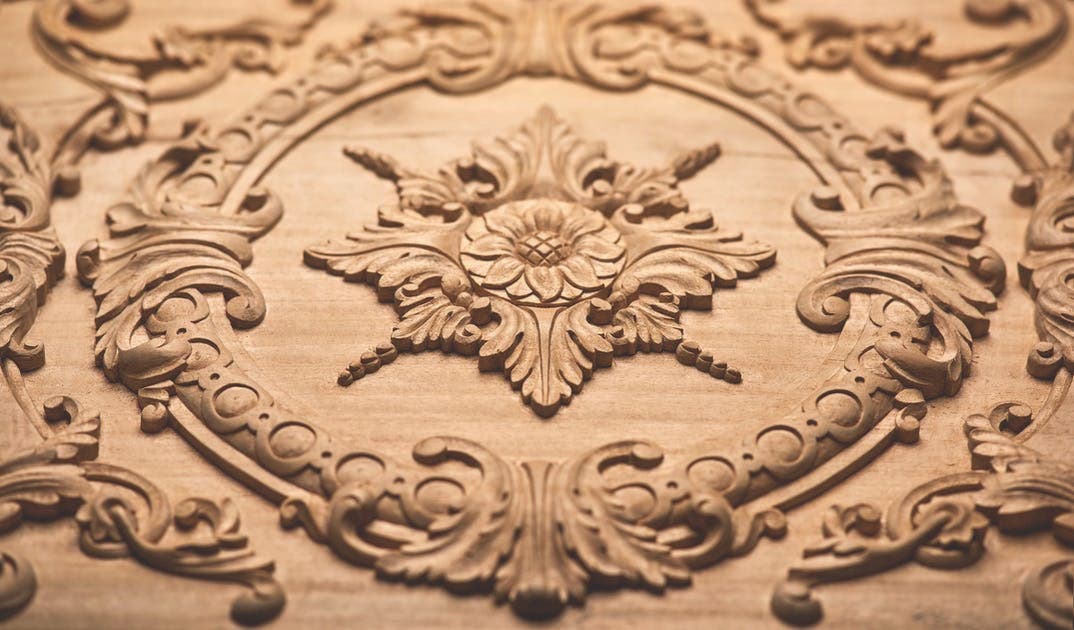
George A. Merritt, who learned his craft under a master Italian cabinet maker, founded the company in 1967, and today, it is owned by his two sons. In addition to high-end woodwork, Merritt also manufactures architectural metalwork, glass work, and in 2017, the company expanded into classical decoration with the acquisition of Agrell Architectural Carving. In addition, Merritt often includes a complete turnkey interior to include stone, plaster, wood flooring, and decorative finishes.
For decades, Merritt performed work for both the commercial and residential sectors, but since the late 1990s, the company has focused exclusively on luxury residential and super yachts. These customers, Michael Merritt explains, are less price-sensitive than those in the commercial sector, because they are not willing to settle for “good enough.” His customers are buying the Merritt detail, craft, and quality.
Holding the line on quality has grown more challenging, the brothers say, as the demand for oak and walnut has grown, while the consistency of top-grade lumber has declined. Instead of buying first- and second-grade lumber, the company now buys veneer-grade logs even for cabinet interiors. This approach ends up using less wood, the brothers note, since workers no longer have to discard as many excessively knotty and sappy boards.
“Once you’re a craftsman, you never want to lower the quality,” says Keith Merritt. “It’s not something you can turn on and off.”
Chris Pellettieri | stone carver
By Jeff Harder
On a Tuesday in the Bronx, stone carver Chris Pellettieri sculpts a black marble base—a complement to a life-size carrara marble portrait bust he completed last year—and intermittently checks in on a student working in the same 400-square-foot workshop. In the nearly 40 years since he first chipped away at a piece of limestone, Pellettieri still finds joy both in the processes of stone carving and sharing them with others.
“You can see your effort and energy going into something that’s changing,” he says. “It doesn’t look the same [at the end of the day] as it did when you came into work in the morning, and it doesn’t look the same at the end of the week as it looked on Monday.”
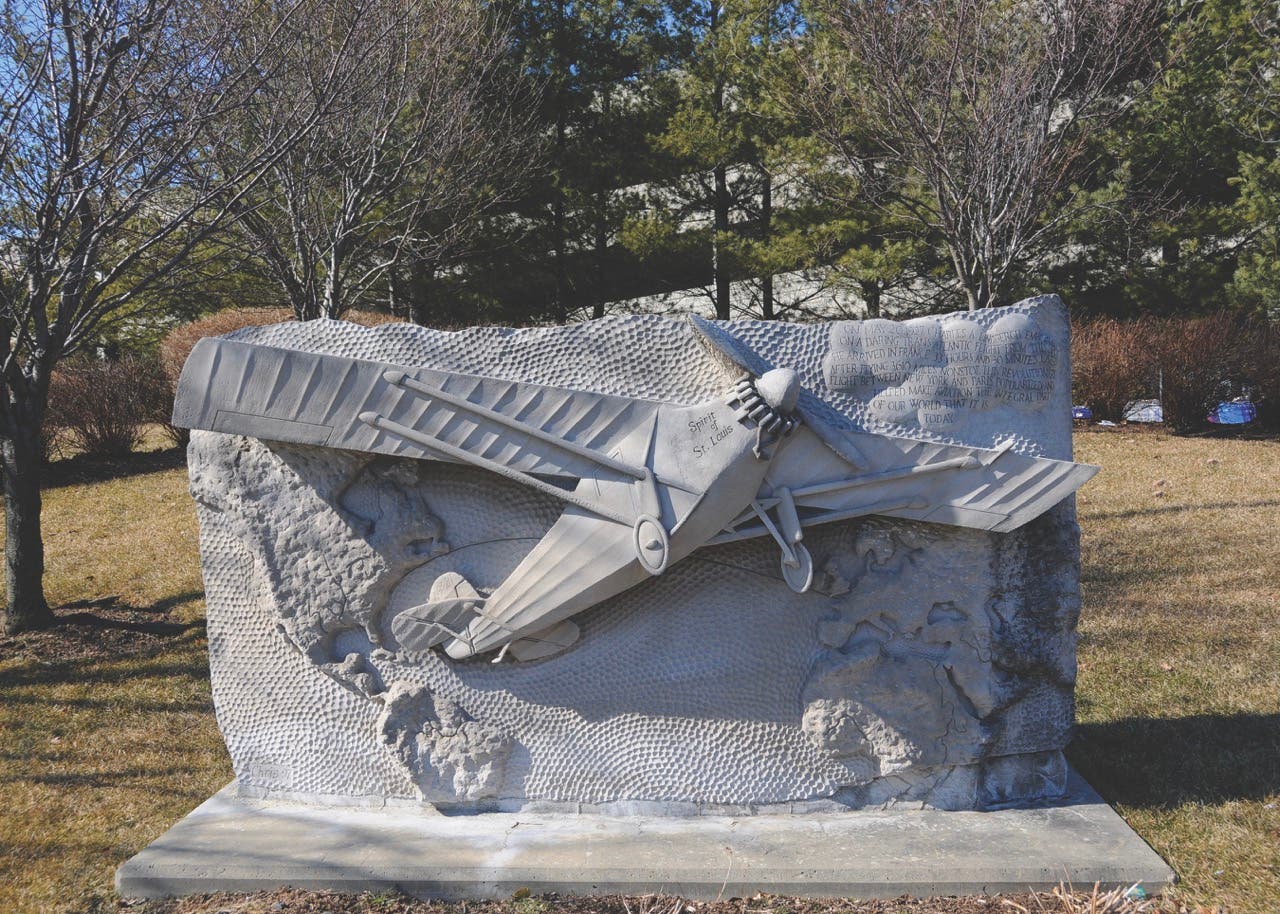

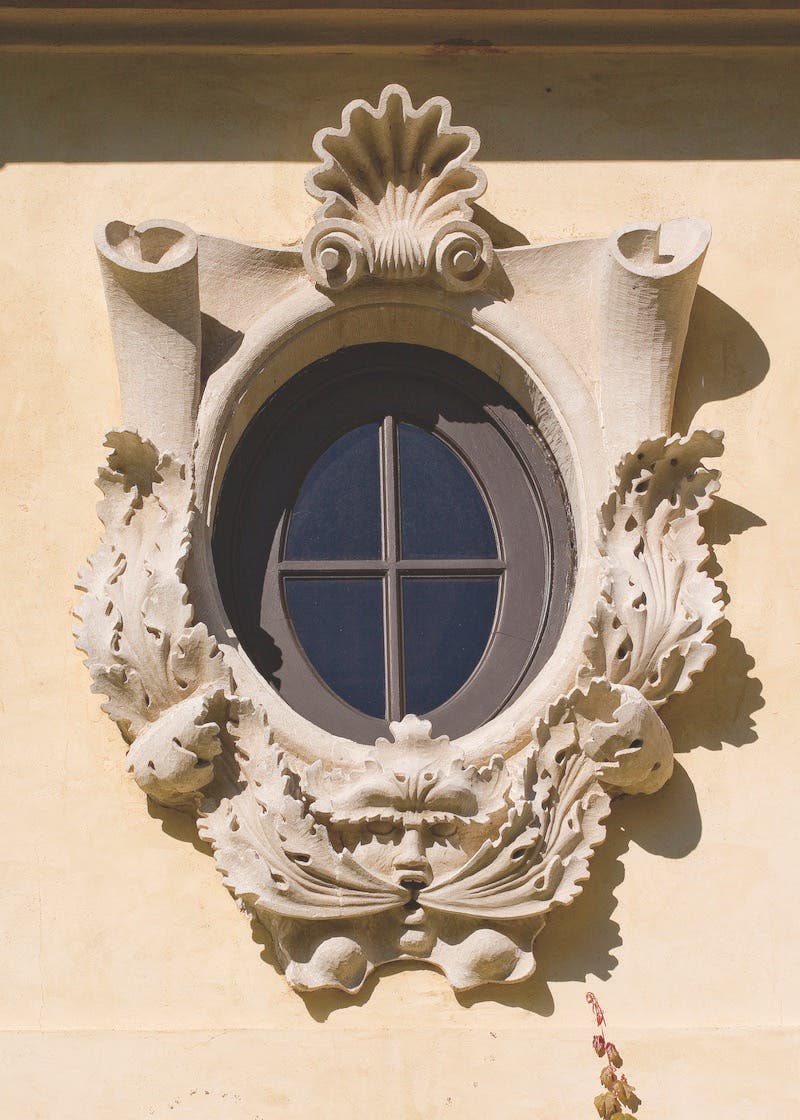
A lifelong New Yorker, Pellettieri was a seventh-grader attending the school at the Cathedral of Saint John the Divine on Manhattan’s Upper West Side in the late 1970s, when the institution brought in a cadre of European stone masons—since there were virtually no homegrown craftspeople with the right classical training—to work on the south bell tower and the center portal of the still-under-construction Gothic edifice. After Pellettieri graduated from New York University with a degree in mathematics, he’d figured out that he’d rather work with his hands than work behind a desk, and he signed up for an apprenticeship in the cathedral’s stone yard to learn the finer points of punches, chisels, and mallets from English and French masters.
“It wasn’t, ‘Go home and read three chapters tonight,’” Pellettieri says. “It was just being totally focused on what you’re doing, somebody comes by and gives you some guidance for a few minutes, and then you spend hours actually internalizing it and getting your hands to learn it.”
Pellettieri has worked as a freelance stone carver since the early 1990s, completing stunning, intricate commissions including an ornate niche at the Cathedral of Saint John the Divine—where, in 1995, he returned as an artist-in-residence, working in a shop housed in an old shed. He learned from others and pushed his craft forward while largely eschewing technology and hewing to his roots. “I’ve worked in marble, slate, sandstone, even a little bit of granite, but I was trained with limestone at the cathedral and I still prefer limestone,” he says.
By 2015, with the cathedral shed demolished to make way for luxury apartments, Pellettieri embarked on a new endeavor to expose traditional stone carving to new generations: Pellettieri Stone Carvers’ Academy. Today, through partnerships with the New York Department of Education and Stephen T. Mather Building Arts and Craftsmanship High School, Pellettieri leads a range of programs centered around classical techniques and hands-on instruction, from one-day workshops where students create raised stone monograms to paid, weeks-long courses for students captivated by a craft that carries exceptionally high barriers to entry.
Pellettieri is clear-eyed about the future of old ways in the modern age. He says he won’t be surprised if machine-made stone sculptures soon become indistinguishable from handmade masterworks. And with a scarcity of commissions to go around as it is, he emphasizes that learning traditional stone-carving techniques doesn’t amount to a job training program. But that doesn’t make the craft any less rewarding, he says.
“People put their kids in music lessons and Little League, and they never really expect that they’ll be professional violinists at Carnegie Hall or playing center field for the Yankees.”
Again and again, Pellettieri emphasizes process over product—not just the techniques, but the design standards, sequential thinking, and concentration required to turn a heavy, faceless block into something beautiful. “I tell my students, you won’t hurt my feelings if stone carving isn’t your thing,” he says. “But there are principles you can practice and think about here, so when you find that thing you’re really excited about, you can apply the same approaches and ways of thinking, and it will bring you success.”








